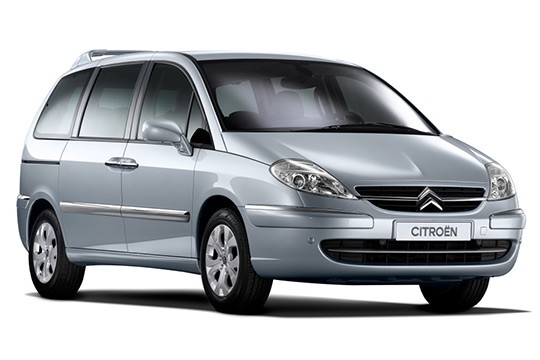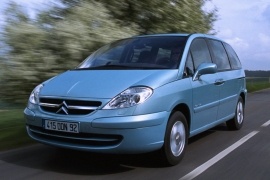CITROEN C8 Models/Series Timeline, Specifications & Photos
First production year: 2002
Engines: Gasoline, Diesel
Body style: Van
In 2008, Citroen refreshed its largest vehicle, the C8 minivan, trying to stay competitive in a market segment that was very narrow and was contested by its siblings such as the Peugeot 807, the Fiat Ulysse, and the Lancia Phedra.
Peugeot-Citroen entered the Eurovan agreement with Fiat to create a range of minivans for the European market. In 1994, the first range of products appeared. Eight years later, in 2002, the four brands that joined this program launched the second generation of these vehicles, which were refreshed in 2008, just before the introduction of the Euro 5 emission standards in the Old Continent. Along with the engine updates, the automakers performed several other design and functionality upgrades.
It takes a keen eye for detail to notice differences between the 2002 and the 2008 C8. Still, at the front, the facelifted model featured a refreshed front fascia that sported the new design language of the marque, noticeable on the brand’s logo. For the newer version, the upper part of the “Double-Chevron” badge was neatly integrated into the chromed horizontal slat that crossed the upper grille. Furthermore, the automaker installed redesigned headlights that sported the same shape but featured new projector beam lamps. For the upper trim levels, the automaker installed chromed stripes on the bumper and the lower grille, which had a smiling shape.
From its profile, the C8 sported front-hinged doors for the driver and side passenger. At the same time, those seated in the back enjoyed easy ingress and egress thanks to the wide sliding doors on both sides. The long roof was slightly sloped down towards the back of the car, and the automaker offered the option of a set of roof rails with sliding transverse bars on them. Finally, at the back, the 2008 C8 featured redesigned taillights with smoked red areas and clear reversing light lenses.
Citroen aimed at higher-profile customers, offering its vehicles as an upscale alternative for the Peugeot 807. It featured higher-quality materials on the range-topping versions, with an integrated sat-nav system into the dashboard. Fronting the driver behind the steering wheel was a small LCD for the tachometer, while the main instrument panel was in the middle of the dashboard. The large speedometer could be read even by those seated in the back.
The eight-seat vehicle featured a 2-3-2 layout. For the middle row, Citroen adopted the idea of individual captain seats that could be slid, folded, or removed individually. As a result, customers could keep the outboard ones and leave the center aisle free to access the rearmost seats. All but the front seats could be removed if needed, transforming the vehicle into a highly capable minivan.
Under the hood, the automaker installed a range of one gasoline and four turbo-diesel engines, paired as standard with five or six-speed manual transmissions. For selected versions, Citroen offered a four-speed or a six-speed automatic gearbox.
The Eurovans continued their mission to put more people inside a family car and still offer plenty of room for luggage, and the Citroen C8 was one of them.
Peugeot-Citroen Group and Fiat rallied together to beat the Renault Espace at its own game by introducing a badge-engineered vehicle range in 1994. Their alliance worked well enough to continue the alliance for a second generation of the so-called Eurovans. Thus, Citroen produced the C8, Peugeot entered the 807, Fiat the Ulysses, and Lancia the Phaedra.
In 2000, Citroen started a new front-fascia theme for its entire lineup, starting with the Xsara and continued with the C5 in 2001 and the 2002 C8. Its tear-shaped headlights featured a straight cut toward the hood and rounded on the exterior. The chromed slat on the grille that supported the "double-chevron" badge was part of the theme as well. From its sides, the C8 showed its sloped front side that started with a steep and short hood continued by a long windshield. In the rear, the slim and very tall taillights flanked the tailgate.
Inside, Citroen installed three seats of rows, with an option for up to seven seats. Apart from the front seats, all other places could slide, recline, or be removed. The carmakers that built the Eurovans didn't consider that a folding system would be a better idea. Its instrument panel was installed in the middle of the wide and long dashboard. Thus, it was cheaper for them to build LHD or RHD vehicles.
The two partners installed some common and some different engines under the hood, with Citroen-Peugeot and Fiat-sourced powerplants. The C8 was available with up to ten engine versions, with either manual or automatic transmissions.

